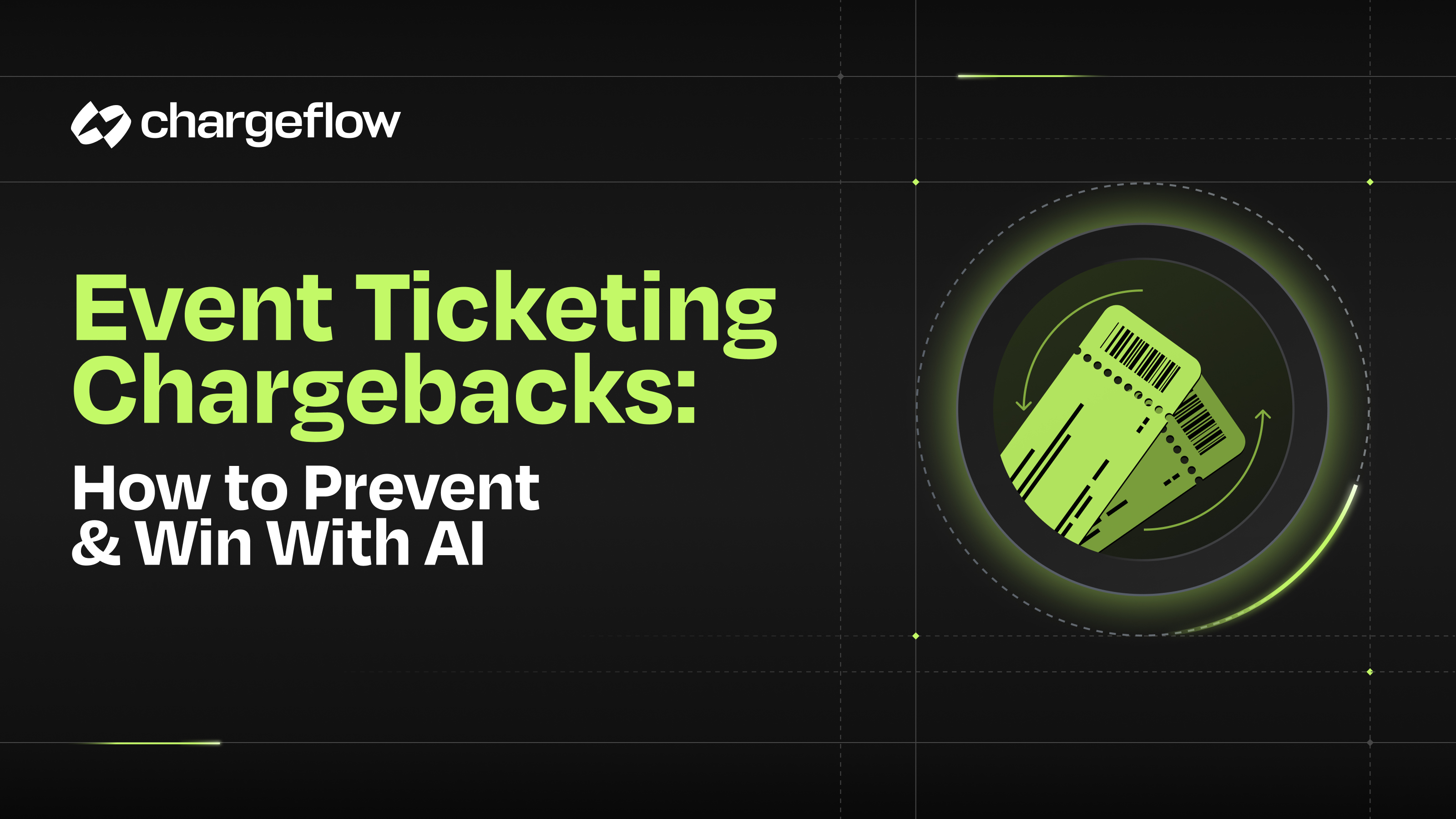How to Spot and Avoid Dropshipping Scams

Chargebacks?
No longer your problem.
Recover 4x more chargebacks and prevent up to 90% of incoming ones, powered by AI and a global network of 15,000 merchants.
Don't fall victim to dropshipping scams! Discover effective strategies to identify and steer clear of fraudulent schemes.
If you rely on dropshipping for your eCommerce endeavors, you need to be wary of scams. From chargebacks to negative feedback, lost sales, and reputation damage, they can cause major problems.
Whether you are an experienced seller or a newbie, you need to learn how to spot the most common scams and how to avoid them - so read on to learn more.
Common Dropshipping Scams and How to Avoid Them
Not every dropshipper is the same. Some are well-established businesses that you can build great ongoing relationships with. Others see it as a get-rich-quick scheme and will cut corners to maximize profits. But, by knowing what to look out for, you can ensure you - and your customers - have a great experience.
1. Product Quality and Misleading Sample Scams
One of the keys to a successful dropshipping business is keeping your customers happy by delivering quality products. When customers order and receive poorly made - or entirely incorrect - products, they're likely to leave you a negative review.
Unfortunately, some suppliers stock their inventory with inferior products or upload misleading images. Some may even send you samples, but that doesn’t mean it is the same item they’ll ship to your customers.
Since you cannot examine each item before it is shipped, you end up with dissatisfied customers and a damaged reputation. No drop shipper wants irate customers to contact call centers to complain about subpar products they bought from their store.
How to spot
To spot product quality scams, check reviews from other customers. Customers usually leave reviews on the seller's website or third-party platforms such as Amazon, AliExpress, or Banggood. These fraudulent sellers will have either no reviews, many negative ones, or a lot of similar, fake-sounding positive ones.
How to avoid
To ensure your customers don’t end up with low-quality products, verify your suppliers thoroughly. If the company is legitimate, you’ll see their business number or identification on their website or official documents.
Confirm the supplier has a physical address and active phone number. Be careful; some scammers provide fake addresses and phone numbers to appear legitimate. Something as common as a phone system small businesses use to confirm a caller’s ID can help determine the credibility of a supplier.
Order samples of every item you sell to confirm the quality of the product. To execute this efficiently, order the product in another name or from a different address. This way, the supplier isn’t suspicious, and you can experience the entire customer journey. Also, take note of the packaging and shipping time.

2. Sub-wholesaler or Middleman
Remember that you are the middleman between the wholesaler and the consumer. So, having another middleman makes things complicated.
Many fraudsters pretend to be wholesalers by offering the same products. But if you look closely, you will discover they’re selling those products above the market price. They do this to make a profit. But by doing so, they are hurting your gain, too.
How to spot
To spot a sub-wholesaler or middleman, compare their prices with other suppliers. If their prices are significantly higher than the average market price, they are not genuine and are just trying to profit from you.
How to avoid
Thoroughly research the suppliers you choose to work with. Look for suppliers with direct relationships with manufacturers and a track record of providing genuine products at fair prices.
Make sure you are dealing with the right suppliers by asking them directly about their sourcing process.
3. Fake and Negative Reviews
An analysis of 720 million reviews revealed that in 2020, 42% of reviews on Amazon were fake. This shouldn’t be a surprise. Fraudsters know that reviews impact purchase decisions, so they buy fake reviews to appear legitimate.
How to spot
To identify fake reviews, consider the phrasing in different reviews. Reviews from different users with the same phrase are probably fake. For instance, if the exact sentence “What a great product, just what I needed” appears in reviews from different users, those comments are likely not genuine. Observe the time stamp of the reviews. If you see a cluster of positive reviews posted on the same day, that’s suspicious.
How to avoid
Look for detailed and specific feedback rather than generic praise. Genuine reviews often include specific experiences, features, or benefits of the product.
Consider the overall rating and the distribution of positive and negative reviews. If a product has an overwhelming number of positive reviews and very few negative ones, it might be a sign of manipulation. Authentic products usually have a mix of positive and negative reviews, reflecting a range of customer experiences.
Also, check for the verification badge. Most eCommerce platforms give verification to show that the reviewer bought the product.
4. Counterfeit Items
One of the best tips to avoid scams is not to be greedy. A product with an unrealistic price is a top fraud red flag store owners should watch out for.
If you fall for this scam, one of two things will happen. The scammer will take your money and cut communication with you. Or they send a counterfeit item to your customer.

How to spot
Whenever you encounter products going for lower or higher than their market value, be cautious. For example, high-end brands like Nike and Balenciaga going for way below market price are often signs of a scam. These brands have strict pricing policies. It is highly unlikely for their products to be sold at significantly lower prices.
Scammers use these well-known brands to lure unsuspecting buyers with low prices, only to deliver counterfeit products.
How to avoid
The best way to avoid falling for unrealistic offer scams is not to be greedy. If a deal seems too good to be true, it probably is. Research the market value of the product you're interested in and compare prices from different reputable sellers. If a particular seller is offering a significantly lower price than others, it's a red flag.
5. Get-Rich-Quick Schemes
Many newbie drop shippers have unrealistic expectations before embarking on their dropshipping journey. It's common to see people talk about how much money they're making. If that's not the case for you, it's easy to be tempted by people selling 'the secret.’
If you fall for this trap, you may end up spending money on unhelpful courses or giving them money.
How to spot
One way to spot a get-rich-quick scheme is through exaggerated claims. If someone promises overnight success or huge profits without putting in much effort, it's likely a scam. Developing a successful dropshipping business takes time, effort, and dedication.
Be cautious of courses or programs that require you to pay to obtain the "secret" of dropshipping success. There are free resources available online that can provide you with the knowledge you need to succeed in dropshipping.
How to avoid
Research the person or company offering the program. Look for reviews, testimonials, and success stories from real people who have benefited from their services. Also, consult reputable online communities or established store owners for recommendations.
Ultimately, dropshipping success comes from building a solid foundation, learning from experienced individuals, and staying committed to learning and growing.
6. Payment Outside of the Official Channels
Financial fraud is a serious dropshipping concern. Besides the loss of money, it also leads to damage to your reputation and legal troubles. You think you’ve paid for a product, only to discover that the supposed supplier is a scammer. So, your customer didn’t receive any item, and you now have to deal with the consequences.

How to spot
A telltale sign of dropping fraud is suppliers requesting payment offline. Legitimate suppliers always provide secure payment options like credit cards or reputable online payment platforms like PayPal.
Suppliers that insist on receiving payment through unconventional methods, like wire transfers or cryptocurrency, are likely trying to scam you.
How to avoid
Use secure payment processors. Most payment gateways use SSL technology to transmit personal information, which helps protect sensitive data. They adopt advanced technology to help prevent fraud.
For instance, with the best AI virtual assistant to analyze patterns and detect suspicious activities, payment processors can provide merchants and customers with an extra layer of security.
You can also use escrow services to ensure that both parties in a transaction are protected. In this process, a trusted third party holds the funds for the customer until they receive the product and confirm its satisfactory condition.
Final Thoughts on Spotting and Avoiding Dropshipping Scams
Dropshipping, like any other business, has its risks. While retailers work honestly to fulfill orders, some unscrupulous individuals may try to exploit unsuspecting entrepreneurs.
Dropshipping scams will always be a concern, especially as eCommerce grows. The best thing you can do is to familiarize yourself with the signs and how to avoid them.
Use the tips in this article to protect yourself and your business from potential dropshipping scams. And remember, dropshipping is not a get-rich-quick scheme. It demands hard work, dedication, resilience, and consistency to succeed. Learn how to combat dropshipping chargeback.

Chargebacks?
No longer your problem.
Recover 4x more chargebacks and prevent up to 90% of incoming ones, powered by AI and a global network of 15,000 merchants.






























.png)








